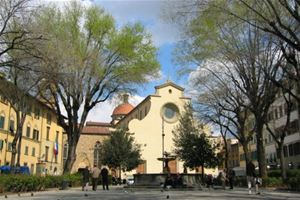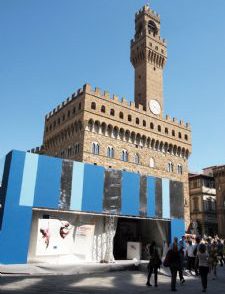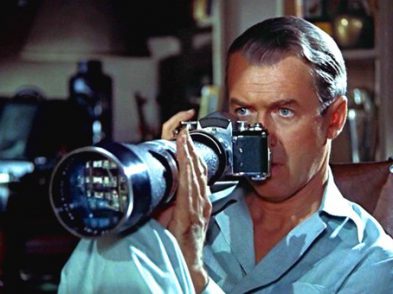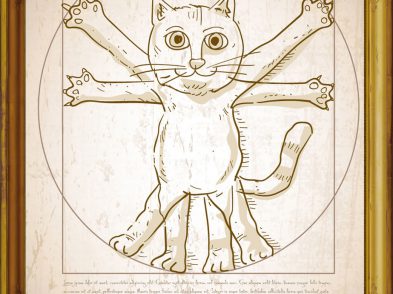Nineteenth-century poets Robert Browning and Elizabeth Barrett Browning are among the most renowned expatriates to have lived in Florence and their home, Casa Guidi, stands across from the Palazzo Pitti. Today, one of its most luxurious flats is occupied by Victor John Barrett Caulfield, a distant relative of Elizabeth, according to his grandmother. Australian by birth, he has made Florence his home for the last two years.
Victor Caulfield was born in Melbourne shortly before the outbreak of World War II. In his youth, he began a series of travels that would chart his life’s course. He crossed the United States by Greyhound bus, which, he says, ‘was dodgy even back then.’ He also came to Europe. During his first trip to Florence, he camped on the grounds just under piazzale Michelangelo and immediately fell in love with the city.
Caulfield then returned to Australia, where he launched an illustrious career in textiles. He also learned equestrian arts from some of Australia’s top riders, leading him to teach thousands of young people and eventually become the inaugural president of an Australian riding association. He lived a very active lifestyle, spending weekends fox hunting and raising horses. Fox hunting is a pursuit with a rather rigid dress code, and so Caulfield began to develop refined sartorial tastes. He also married the same Australian woman twice.
Throughout this colourful period of his life, Florence remained dear to his heart. He would return countless times over the span of a half-century, including for his second honeymoon.
Two years ago, he moved permanently to Florence. Through local real estate contacts, he was lucky to find a space in Casa Guidi. The house dates back to the fifteenth century and has a storied history. Occupants have included Renaissance nobles, the Brownings and, more recently, students from Eton College.
Although self-described as ‘new boy in Florence,’ Caulfield has embraced his new home. He was intimately familiar with the city’s narrow streets and hidden treasures but had never been here for a long stay. He enrolled in an Italian language-learning program and has relished ‘the incredible privilege’ of living in the city.

Victor poses next to a portrait by George William Clark, a student at Charles H. Cecil’s studio. Victor frequently assists art students in Florence by sitting for portraits.
He now knows all the best places to find men’s clothes in town. (It’s all about, he says, ‘knowing where to look’: he highly recommends the annual American International League Christmas bazaar, which, he notes, has ‘an incredible selection of the most beautiful clothes’.) He is a regular customer at Trattoria Bordino on via Stracciatella as well as Chicco di Caffè on via della Chiesa, just behind piazza Santo Spirito.
Caulfield is an active presence in the local expat community. He has been impressed by the hospitality and friendliness of the expats and especially appreciates that others are so willing to share their knowledge about the city. This contributes to, as he describes it, Florence’s ‘village atmosphere,’ in which people get to know each other quite well. He is involved with the American International League of Florence (its only male member!) and is president of Australians and New Zealanders in Florence (ANZIF), which serves the local Antipodean expat community, hosting monthly get-togethers, with potluck meals in various members’ homes. On April 25, the group commemorated ANZAC Day, which honours Australian and New Zealander soldiers who have served and died for their countries. (‘ANZAC’ stands for the legendary Australian and New Zealand Army Corps, which fought at Gallipoli (Puglia) in World War I.) In the months ahead, ANZIF is contributing to the British Institute’s Talking Pictures programme on cinema from Australia and New Zealand. Caulfield also hopes to connect the group to Monash University in Prato (see TF 182).
Caulfield, a music enthusiast, especially enjoys opera and choral music, with which, he observes, ‘Florence abounds,’ and regularly attends concerts in the Duomo and St. Mark’s Church (see TF 181). A fan of ‘Amici della Musica’ concerts at the Pergola theatre, one of the oldest working theatres in Europe, Victor also helps to organise a diverse array of concerts at home, including those featuring opera singers, string quartets, and even an American musician playing a 300-year-old viola da gamba.
Caulfield enjoys the Florence lifestyle, as, he remarks, ‘there’s always something going on.’ He prefers the Oltrarno area, finding it a unique and closely knit community. However, piazzale Michelangelo remains a favourite spot: ever since camping nearby all those years ago, he has loved to go there and admire the view of the city.
To learn more about ANZIF, e-mail australians.florence@gmail.com.







